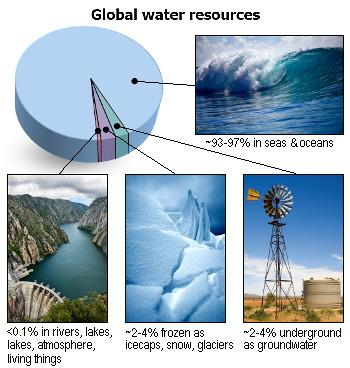Water Crisis in Himalayan Region | 02 Mar 2020
Why in News
Recently, several towns were surveyed in the Himalayan region of Bangladesh, Nepal, India and Pakistan to understand the challenges of the water crisis in urban areas of these regions.
Key Points
- Eight towns in the Himalayan region of Bangladesh, Nepal, India and Pakistan were nearly 20%-70% deficient in their water supply.
- The places surveyed are extremely dependent on springs (ranging between 50% and 100%) for their water, and three-fourths were in urban areas.
- Rural areas have typically garnered much of the attention in terms of development and issues surrounding urban environments have been sidelined.
- Factors responsible:
- Unplanned urbanisation
- Climate change
- Across the region, the encroachment and degradation of natural water bodies (springs, ponds, lakes, canals, and rivers) and the growing disappearance of traditional water systems (stone spouts, wells, and local water tanks) are evident.
- Although only 3% of the total Hindu Kush Himalayan population lives in larger cities and 8% in smaller towns, projections show that over 50% of the population will be living in cities by 2050, placing stress on water availability.
- Under current trends, the demand-supply gap may double by 2050.
Water Crisis in India
- India tops the list of countries with the most number of people living with water scarcity.
- As many as one billion people in India live in areas with physical water scarcity, of which 600 million are in areas of high to extreme water stress.
- Approximately 330 million people from 302 districts were affected by droughts in 2016.
- Over 21% of the country’s diseases are water related. In 2015, India lost over 1 lakh children under the age of five to diarrheal diseases.
- As per a report by NITI Aayog, Bengaluru will soon be among one of the 11 cities in the world to run out of ground water.
- The report also states that the ‘Day Zero’ will hit Bengaluru and 20 other major cities (including Delhi) in India by the year 2020 affecting an estimated 100 million people.
Day Zero Situation
- Day Zero is a situation when taps in a region start running dry. It is a situation when there will be no water in the taps and the use of water will become restricted for vital services only.
- Considering the present situation of water crisis in several cities of India, they are being termed as soon to be India’s Cape Towns.
- The city of South Africa ‘Cape Town’, in 2018, launched a countdown to the day when tap water would be cut-off to millions of residents as a result of a three year drought.
- Brazil’s Sao Paulo faced its own Day Zero in 2015. The city turned off its water supply for 12 hours a day forcing many businesses and industries to shut down.
- In 2008, Barcelona in Spain had to import tankers full of fresh water from France.
Way Forward
- Communities were coping through short-term strategies such as groundwater extraction, which is proving to be unsustainable.
- A holistic water management approach that includes springshed management and planned adaptation is therefore paramount.

